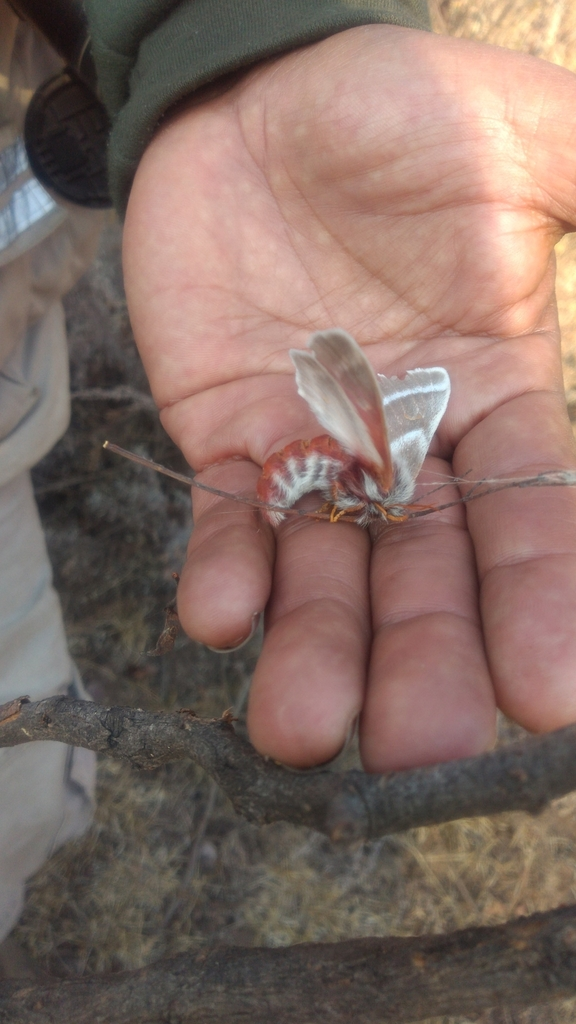Like the other Hemileucas found only in Mexico, H. mexicana is still scantily documented in English, but much more information about it is available online now than was available ten years ago. Much of that information is in the form of photos at INaturalist. For reasons unknown Google ranks INaturalist.ca above Naturalista.mx, although both sites tend to have the same photos.
Photo by Hagal, who mentions having taken it in April in Durango. Apart from the special capelike pattern on the inner wings near the body, it has that basic Hemileuca look. It can be light gray as shown, or reddish brown, or dark gray. Fat Hemileucas are usually young, gravid females, just as people who wear Mexican beaded bracelets are usually females; what this tells us about the size of the moth is inconclusive.
This photo by El_Ing_Legorreta shows the moth's wingspan to be about 6 cm or 2.5 inches. This moth was found in January.
And Pyro documented that this moth, found in January, shares the Hemileucas' general tendency, as adult moths, to forget that they are adult moths who might be able to fly away from predators, and drop to the ground and curl up, as if they thought they were still caterpillars with venomous bristles that would discourage anyone from eating them. Humans don't want to eat them but this behavior does not discourage birds or rodents who do.
Though it's a desert dweller, Hemileuca mexicana has invaded cities such as Pachuca. The close-up photo on page 20 of this e-book documents that the caterpillar has, if not additional stinging spines, at least prickly little spikes on its feet. Its black skin develops a sprinkling of tan speckles as it matures. It eats grass. (Fortunately, although pre-pupal Hemileucas explore and nibble a bit, they prefer wild native grass species to lawn grass or grain crops. They are occasionally swallowed by grazing animals, who may react to their venom.)
Despite having snapped a stunning photo of this moth caterpillar, Petez Jarillo counted only butterflies in the study.
Possibly because it folds its wings rather than spreading them, as the big silk moths do, this relatively small silk moth was at first mistaken for a Lasiocampid, a lappet moth. Even from a drawing, Dyar wrote, this was obviously an error. Unfortunately, though Dyar mentioned this species in a monograph on the Southwestern "range caterpillars," all he had to work with were drawings, so he couldn't write very much about it. And if anyone has written more about it in the intervening century, what they've written is being suppressed by Google.





No comments:
Post a Comment